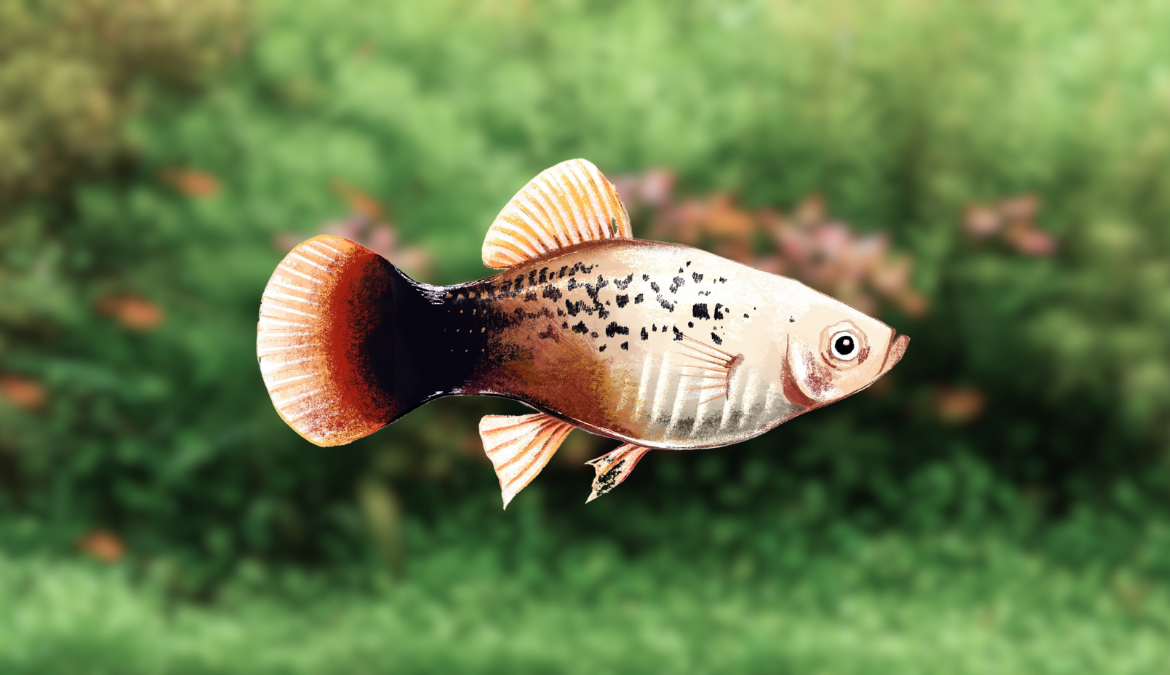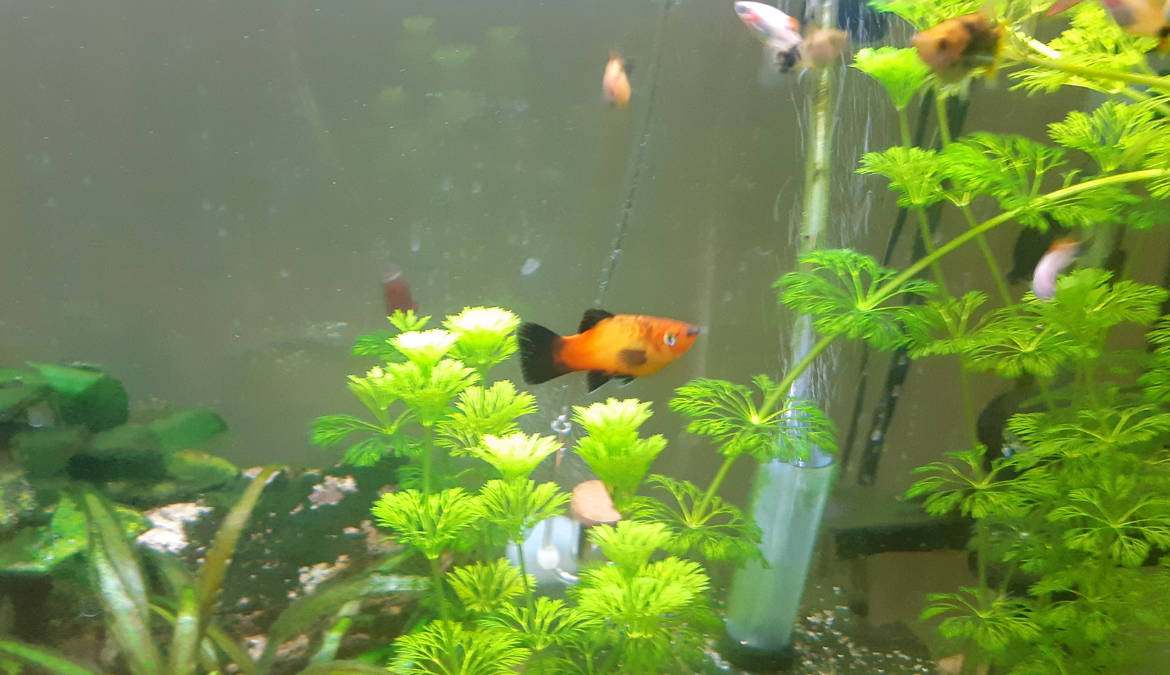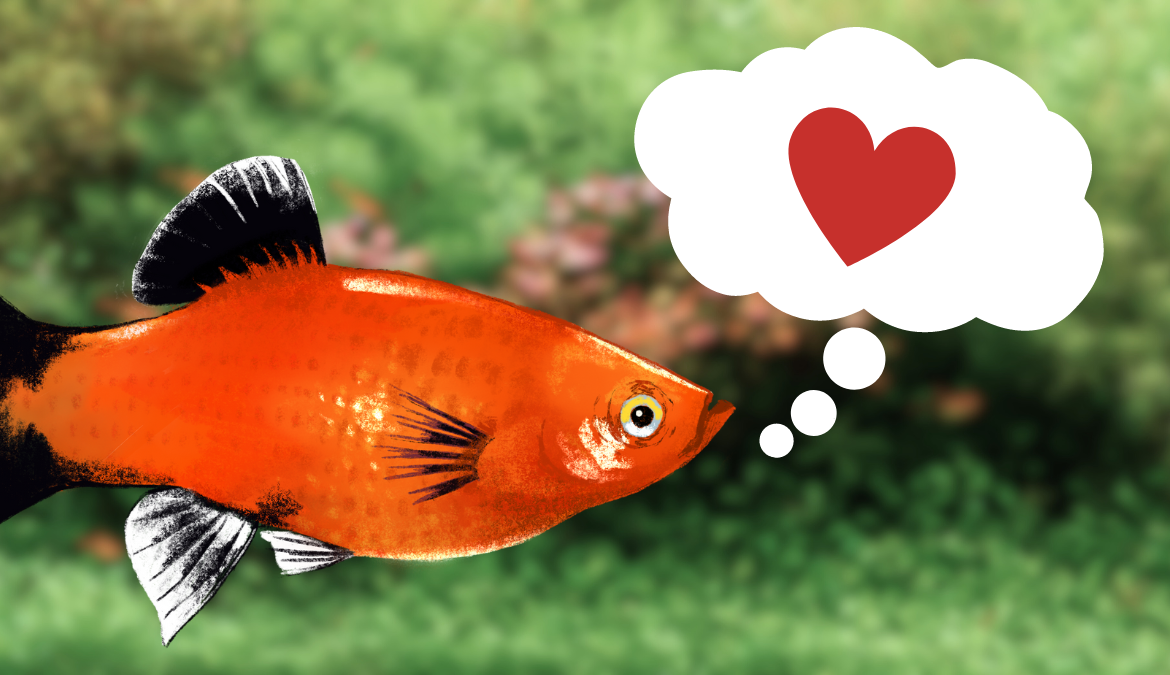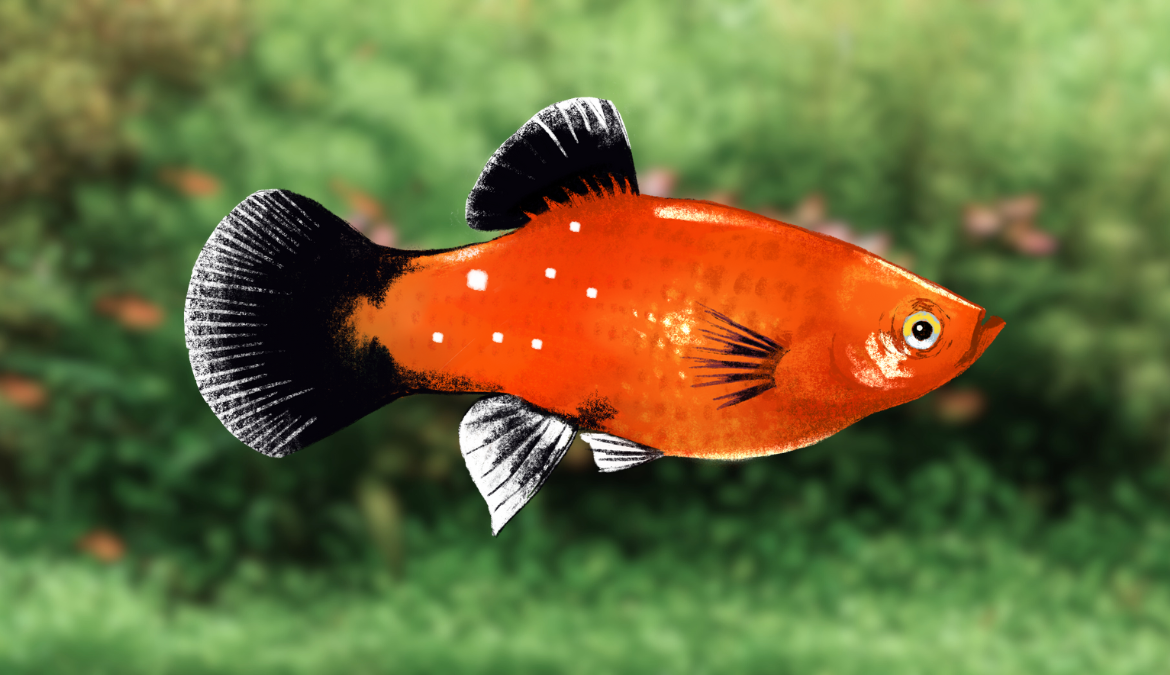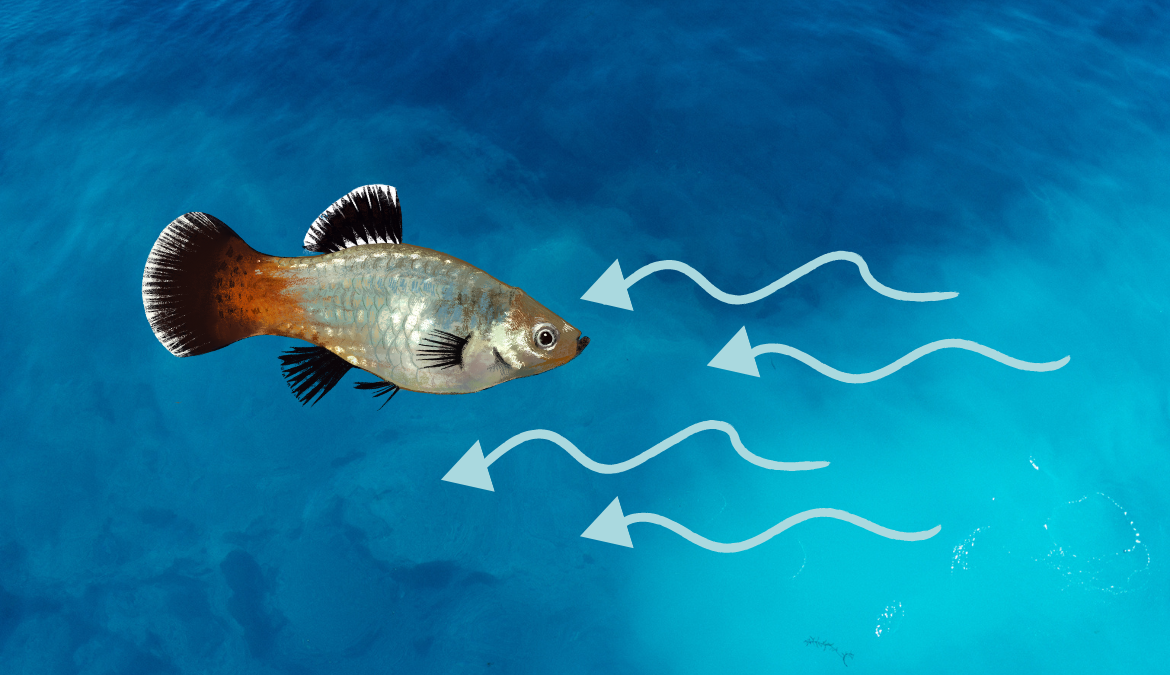The appropriate number of platies creates healthy social behavior, enrichment and reduced stress. Platies enjoy company in their tank and are usually peaceful towards other fish species. But gender ratio, tank size and tank setup might affect their social dynamics.
If you’ve chosen to keep platy fish, a popular choice among aquarium hobbyists, it’s crucial to understand their behavior and social dynamics.
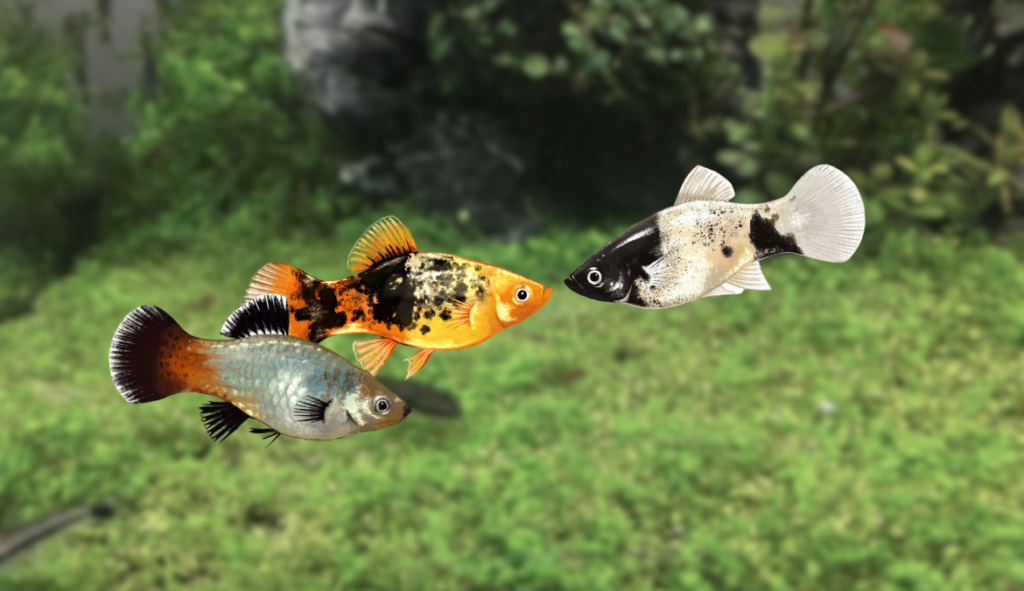
Contents
Basics of Platy Fish Behavior
Platies are well-known for their sociable nature. They enjoy the company of their kind and other peaceful fish species. Familiarity with their behavior is key to creating a comfortable habitat where they can exhibit their natural behaviors.
Social Nature of Platy Fish
Platies are social fish, preferring to live in groups rather than alone. This social aspect is a significant part of their behavior and contributes to their overall well-being.
They are peaceful fish, cohabitating well with other species that share similar temperaments. A well-stocked community tank encourages natural platy fish behavior, providing them with a sense of safety and companionship.
Here are the benefits socializing adds to your tank:
- Social Interaction: Platy fish are naturally social and live in groups in the wild. For these species, having tank mates can provide necessary social interaction and stimulation.
- Safety and Stress Reduction: In a group, platies often feel safer because the ‘safety in numbers’ approach can reduce the perceived threat of predation. This can lower stress levels and lead to healthier, more vibrant fish.
- Stimulating Natural Behavior: Having multiple fish can stimulate natural behaviors that you wouldn’t see in solitary fish. These behaviors can include mating rituals, territory establishment, and more. Observing these behaviors can be fascinating and rewarding for the hobbyist.
- Tank Balance: In a community tank, different species often occupy different niches – some might be bottom dwellers, some mid-water swimmers, and others prefer the surface. This can create a more balanced and dynamic aquarium environment.
- Aesthetic Appeal: A well-stocked aquarium full of healthy, interacting fish is a beautiful sight and can be a centerpiece of home decor.
Proper grouping and stocking strategies are essential for maintaining harmony in your aquarium. Overcrowding can lead to stress and unhealthy competition for resources, while too few platies can cause them to feel vulnerable and stressed. Balancing the numbers is critical.
Typical Daily Behavior Patterns
Platy fish are diurnal, meaning they are most active during the day. Observing your platies’ daily routines can give you an insight into their health and happiness. Healthy platies will spend their days exploring their environment, foraging for food, and interacting with their tank mates.
Their diet is an essential part of their daily behavior. Providing a balanced diet, including appropriate live foods, encourages natural foraging behaviors and keeps your platies healthy and active.
Understanding Platy Fish Social Dynamics
While it’s entertaining to watch your platy fish swimming around in their tank, it’s important to understand the social dynamics at play. Platies have a complex social structure that influences their interactions with each other and other species.
Grouping and Schooling Behavior
Platies exhibit grouping behavior, often seen swimming together in small groups. This is not just a random activity but a form of social interaction and a survival mechanism.
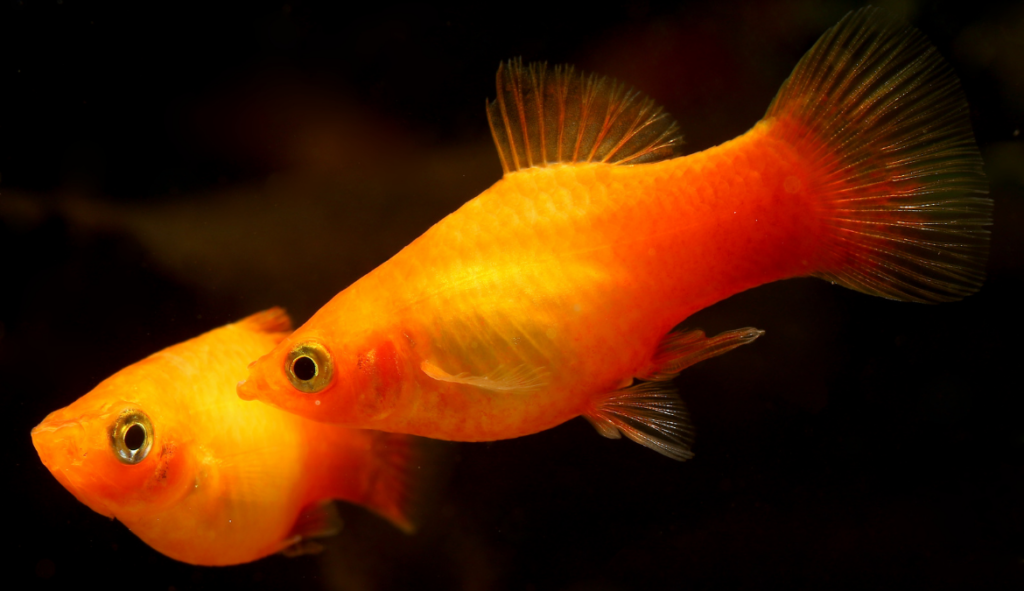
By staying close to each other, they can better protect themselves from perceived threats, increasing their survival chances in the wild. This grouping behavior is carried over into the aquarium setting, making it a vital consideration when setting up your tank.
Male to Female Ratio
When keeping platy fish, it’s crucial to maintain an appropriate male to female ratio. Males can sometimes become aggressive in their pursuit of females, leading to stress among the group.
By keeping a higher number of females to males, typically a 2:1 or 3:1 ratio, you can minimize this aggression and maintain a peaceful tank environment.
Knowing how to identify your platy fish’s gender will be important here. Our comprehensive guide on platy fish reproduction can provide more insights on this.
Inter-Species Interactions
When it comes to inter-species interactions, platy fish are generally peaceful and get along with other peaceful fish species. However, it’s crucial to choose tank mates wisely to avoid any potential conflict.
Fish that are too large, aggressive, or that have a significantly different habitat preference may not make suitable companions for your platies.
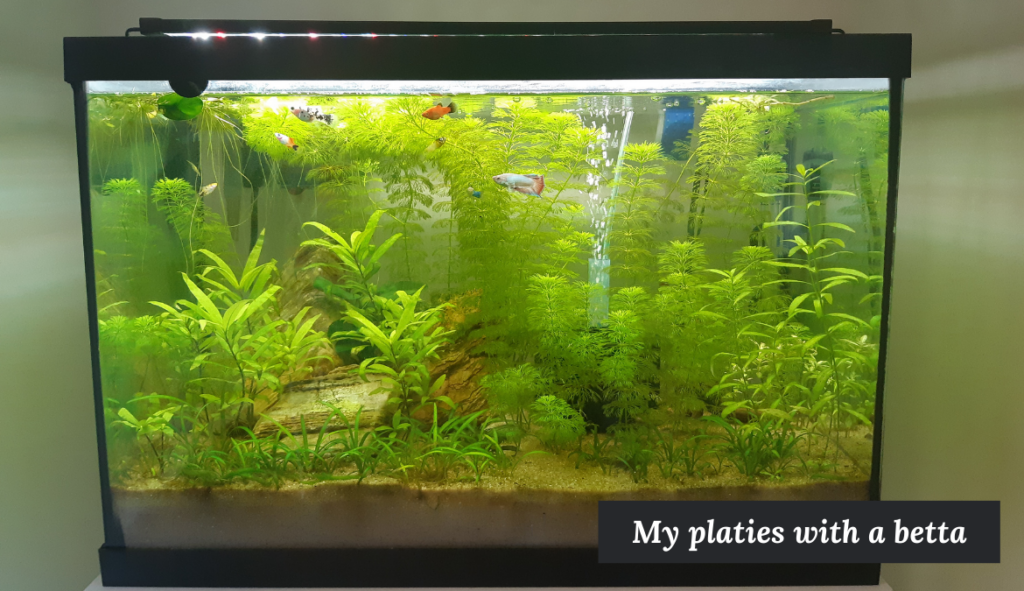
In my experience, I haven’t had any inter-species issues between platies, bettas, or plecos. My platies have been curious and tend to investigate new tank mates but they have never shown aggression towards them.
Signs of Stress and Unusual Behavior
While platy fish are generally hardy and adaptable, they can display signs of stress or unusual behavior in less-than-ideal conditions. It’s essential to monitor your fish regularly and learn to recognize these signs to ensure their well-being.
Signs of Stress in Platy Fish
Signs of stress can vary, but often include unusual clamped fins, flashing, swimming patterns, loss of appetite, and reduced social interaction. These could indicate a range of issues, from illness to unsuitable water parameters.
- Clamped Fins: When a platy is healthy, its fins are usually spread open. Clamped fins, where the fish keeps its fins close to its body, are a common sign of stress or illness.
- Flashing: This term refers to a fish rubbing itself on objects in the tank, which can look like a quick “flash” of light as the fish turns on its side. It’s often a sign of irritation or discomfort, frequently caused by parasites, infections, or poor water quality.
- Altered Swimming Patterns: Healthy platies have a smooth, balanced swimming pattern. Changes to this, such as erratic swimming, swimming upside down, or consistently staying at the top or bottom of the tank, could indicate issues like swim bladder disease, parasitic infection, or water quality problems.
- Loss of Appetite: If a platy is refusing food or eating less than usual, it could be a sign of stress, disease, or inappropriate water conditions. Consistent lack of appetite can lead to weight loss and weaken the fish’s immune system.
- Reduced Social Interaction: Platies are generally social fish. If a normally active and social platy starts to isolate itself or shows less interest in interacting with tank mates, it could be a sign of stress, illness, or that it’s being bullied by other fish.
Keeping an eye on your platy fish and their behavior can help you catch any potential problems early, leading to quicker solutions and better fish health.
Understanding the ideal water parameters for platy fish can help you prevent many of these issues from arising.
Unusual Behavior and Its Causes
Changes in behavior can often be the first sign of a problem. Unusual behaviors to watch for include erratic swimming, hiding more than usual, or aggression towards tank mates.
These behaviors could be caused by several factors, such as illness, poor water quality, or issues with tank mates. By understanding the root causes, you can quickly address these issues and restore harmony to your tank.
Our detailed platy fish care guide can provide further assistance in dealing with unusual behavior in platy fish.
Understanding Platy Fish Aggression
While platy fish are known for their generally peaceful nature, there can be instances of aggression, particularly in overcrowded tanks or when the male to female ratio is skewed.
Reasons for Aggression
Aggression in platy fish is usually a result of stressors like overcrowding, competition for food, or a high male to female ratio. They may chase, nip at each other, or show other aggressive behaviors.
As a responsible fish keeper, it’s essential to understand these signs and the underlying causes to alleviate the issue.
Our guide on dealing with aggressive platies can offer further insights on managing and preventing aggression among your fish.
Managing Aggression
Managing aggression involves identifying the cause and taking steps to mitigate it. This could involve reducing the number of fish in your tank, ensuring you have a balanced male to female ratio, or providing ample food resources.
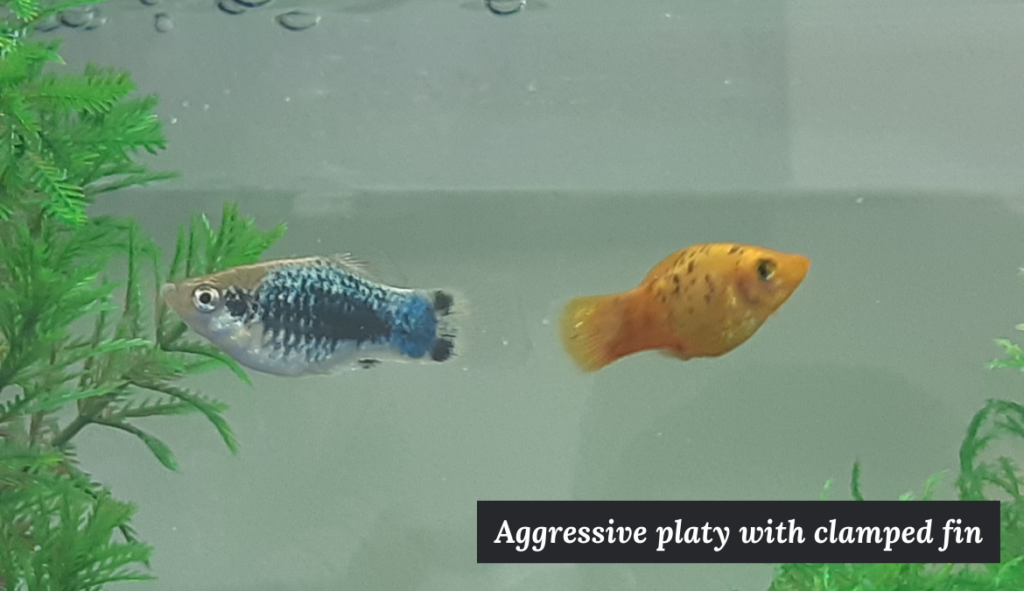
Sometimes, introducing new hiding spots or rearranging the tank decor can help by disrupting established territories.
Remember, a harmonious tank setup is key to the overall well-being of your platy fish.
The Impact of Environment on Platy Fish Behavior
Just like us, fish are greatly influenced by their surroundings. Providing an optimal environment is key to promoting natural, healthy behaviors in platy fish.
The Importance of Tank Size
Platies are active swimmers and enjoy exploring their surroundings. Therefore, a spacious tank is crucial to their happiness and overall behavior. Overcrowding can lead to stress and increase the likelihood of disease and aggression.
I recommend starting with no less than 20-gallons as that will provide adequate room for several platies. But many people will suggest that 10-gallon tansk are also suitable.
In my experience, the 10-gallon tank is fine for small or juvenile platies. But my fully grown platies quickly overcrowded my 10-gallon tank, causing aggression and illness.


